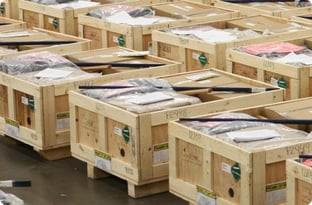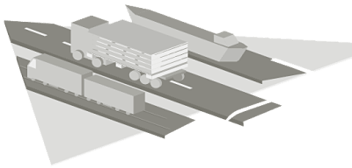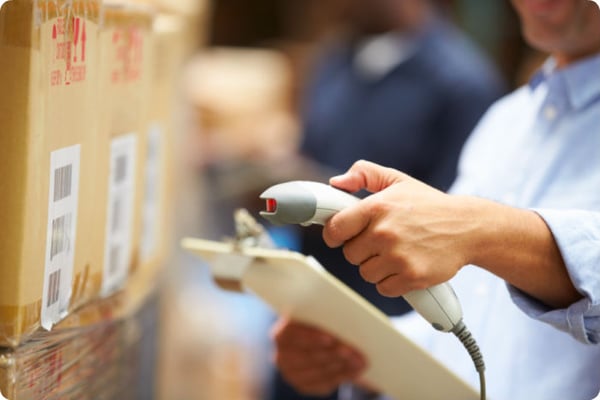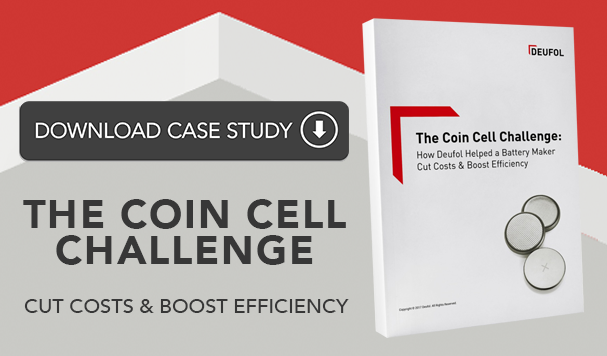The holiday season is here, which means it’s also the time of year to find the perfect gifts for your loved ones. If you have children, grandchildren, nieces or nephews, you’ve probably seen firsthand how technology has changed the holiday season. There was a time when a kid’s holiday list was filled with the most popular toys. Now those lists are filled with tablets, smart apparel, and even virtual reality headsets.
Technology hasn’t just changed the types of gifts we buy. It’s also changed nearly every facet of the way we work. Perhaps nowhere is that more evident than in manufacturing and industrial businesses. The evolution of software, automated machinery, and even artificial intelligence has likely changed the way you build your products.
We frequently consult with manufacturers
who have invested in state-of-the-art tech to produce their products, but who still use manually built wooden crates for packaging.
You’ve probably embraced technology to improve your own production and processes, but have you implemented new technology to improve your packaging? At Deufol, we frequently consult with manufacturers who have invested in state-of-the-art tech to product their products, but who still use manually built wooden crates for packaging.
The truth is that packaging technology has also advanced significantly in recent years. Some of that new technology could help you minimize damage risk, improve efficiency, and reduce costs.
Not sure how technology could benefit your packaging and distribution process? Below is a step-by-step guide to how software and other technology can optimize your packaging function. If you’re not using these tools, now may be the time to rethink your strategy.
 Package Design
Package Design
You likely have packaging goals and needs that are unique to your product and industry. However, generally, most companies share a few common objectives. They want to minimize risk and ensure product quality. They want to use as few materials as possible. And they want an efficient process that requires little manual labor.
Sound familiar? Then your process likely would benefit from using packaging engineering software in the design phase.
Too many manufacturers and even industrial packaging companies use rough estimates and back-of-the-napkin drawings to design their crates and containers. Packaging engineering software performs an in-depth analysis on your goals and needs and to identify top potential risks.
Your packaging engineers then use the software to develop a container that minimizes those risks while also meeting your cost and material objectives. Software gives you the power create designs that are nearly impossible to develop by hand.
Do you use packaging engineering software? If you work with a packaging company, do they use such software?
 Packaging Production
Packaging Production
Once the package is designed, how is the packages actually produced? If you build them in house, do you have team members who devote time to hand-building the crates? If they’re built by a third party, how much labor goes into production?
 The problem with manually building your packages is that it drives up per-unit costs, suppressing your margins and possibly limiting your ability to competitively price your products. Of course, you also may not want to invest substantial capital in a fully automated system.
The problem with manually building your packages is that it drives up per-unit costs, suppressing your margins and possibly limiting your ability to competitively price your products. Of course, you also may not want to invest substantial capital in a fully automated system.
The good news is that technology now exists to completely custom build your packaging production process, and it can be done in a way that blends automation with manual inputs. You get the best of both worlds — limited labor costs and minimal capital investment. And, if you used packaging engineering software for the design, that software can likely feed the production instructions directly into your semi-automated system.
 Crating and Distribution
Crating and Distribution
You’ve used software to design the most efficient and effective package possible. You implemented a semi-automated process to produce the package in a cost-efficient manner. Now it’s time to actually package your parts and products. How do you maintain transparency through that process?
In an ideal world, you would know where every product is at all times. You’d know which products were packed into which crates and which parts and products were added to your warehouse inventory. And you’d be able to access that information as quickly as needed.
That capability exists with barcode scanning technology. We utilize a barcode system that can be applied to parts, products, materials, crates, or just about anything else in your facility that needs to be tracked.
Given the software capabilities that exist today,
there’s no reason to not track all of your parts and products in real-time.
A barcode is placed on the item and then scanned as it moves through your process. The scan data is then synced with your software, so you can simply log in and find the information you need in a few clicks. You can instantly provide status updates to your customers. Your team members can track down missing parts and materials. You can double check that the right parts were loaded into the right crates.
Given the software capabilities that exist today, there’s no reason to not track all of your parts and products in real-time. That type of transparency can help you avoid delays and quality issues, and it can boost your value proposition to your customer.
 In Transit
In Transit
After you crate the product and load it onto the truck, it’s out of your hands, right? Not quite. As you likely know, any number of things can happen between the time the crate leaves your facility and arrives at its destination.
The trip could be rocky, causing excessive vibration that threatens quality. The package could be exposed to heat, humidity, or other damaging elements. If it’s going international, customs officials could open the package and then repack it in a way that exposes the product to risk. Or your customer could have a tight deadline and may request constant updates.
There’s a simple technological solution to all of these challenges. It’s GPS. You can use GPS technology to not only track location, but also other conditions. A GPS tracker can record temperature, air pressure inside the crate, vibration, and more. You can use it to monitor your product’s status and provide your customer with updates.
 Delivery and Receiving
Delivery and Receiving
Finally, the crate arrives at its destination, possibly one of your facility’s or a customer’s work site. You can boost your value proposition with the customer by making the delivery and unpack process as simple as possible.
 There are a number of technological solutions that can accomplish this goal. The barcode scanning system already mentioned can be used as the crate is unpacked, allowing you and the recipient to monitor the location and status of every part. GPS technology can help the recipient find the right container quickly in a busy warehouse or jobsite.
There are a number of technological solutions that can accomplish this goal. The barcode scanning system already mentioned can be used as the crate is unpacked, allowing you and the recipient to monitor the location and status of every part. GPS technology can help the recipient find the right container quickly in a busy warehouse or jobsite.
You could also use an innovative piece of software known as photodoc. It takes pictures of all the items in a crate as the crate is packed and saves them in shared software. When the crate is unpacked, the recipient can pull up those images.
Photodoc helps in a few ways. First, it provides visual evidence that the product was in good quality when it was packed. However, it can also be helpful if the person unpacking the crate isn’t exactly sure what they’re handling. They can pull up images and names of items instantly, which may help them route those parts to the correct shelf or workstation.
If you haven’t implemented any of these solutions, you could be missing out on a substantial opportunity. Packaging technology can help you cut waste, improve quality, and deliver value to your customers. Review your packaging process and think about how these forms of technology could improve your outcomes. ![]()







Let Us Know What You Thought about this Post.
Put your Comment Below.